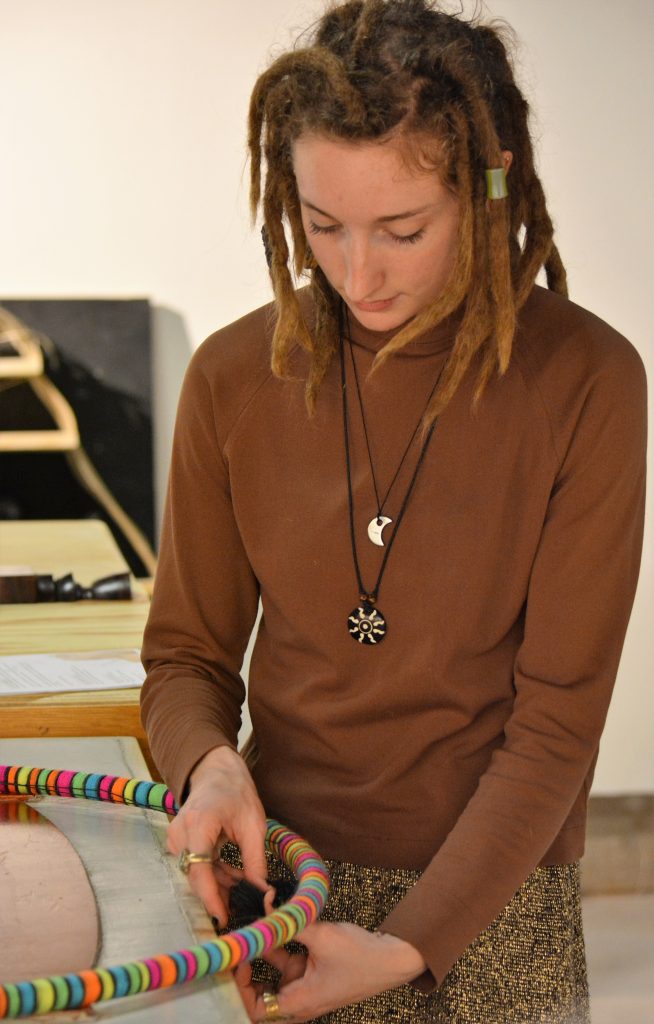The inner workings of the artistic process are something infrequently shown to the world. Those involved in the arts are rarely bold enough to show complete strangers their unfinished pieces, be it a song, painting or sculpture. Despite this fear, artists typically have towards works in progress, the students at the Project Learning Lab in Rosza Gallery B were incredibly receptive to my questions about their work. This space is used as an extended classroom primarily for Sculpting, and allows for students to get their hands dirty with sculpting and display their work at the same time. It’s almost impossible to point out something that hasn’t been made by one of Lisa Gordillo’s sculpting classes. The tables that students work on now were originally a final project for students of the class before them. They’re littered with anything from drawings and notes from their class to the rough beginnings of a student’s sculpture.
Around the room, students have their sculptures displayed from past projects. Gordillo explains what’s currently taking up a majority of the room, “When we move into the final project, the artists that we’re looking at use structure and space really effectively.” The students are working on creating an installation piece, which is a sculpture that is experienced, not just witnessed. To do this, they’re practicing a style of learning called atelier. The students of this class are supposed to be drawing inspiration from well-known artists. Gordillo, with a laundry list of involvement across campus, has both an experience and drive that allows her to teach art and imbue passion for it throughout all of her courses.
Charles Heckel, a third year software Engineer, drew from the work of Martin Fourier for his most recent project. “For my piece, I was inspired by people, races and cultures. I made these [knobs] that I was going to turn on a lathe but I didn’t have a lathe, so I turned them on a table saw which was pretty interesting, and then I stained them various colors,” remarked Heckel. The finished piece is simple, but conveys a strong message about our society as a whole. It suggests we are but unique islands in the world, quartering ourselves from those we find too different.
Aaron Rabideau, a fourth year mechanical engineer, recounts his experience with art at Michigan Tech, “I really enjoy these classes. They’re a great break from engineering, math and exact answers that I have to deal with every day.” Art is a mode of expression that allows most students at Tech to strengthen a part of their brain routinely forgotten by the courses they normally take. Some at the reception had already taken Sculpting I, and were now taking an independent study to express themselves fully.
Grace Schroeder, a fifth year civil engineer, explains her current idea for a piece, “My idea is to make some cloud-inspired art, something that will hang and be reminiscent of clouds, it’s going to be really interesting to see how it comes together because I don’t know how that part is going to work yet. I’m excited about what it could be.” This perfectly encapsulates the nature of the room she works in. The room emits an air of possibility, an energy of what could be. That is the nature of art, not the essence of perfection or the attainment of beauty, but the attempt at capturing what’s possible in life. With each piece, we strive closer to the essence of the possible and even closer yet to the creation of reality.





